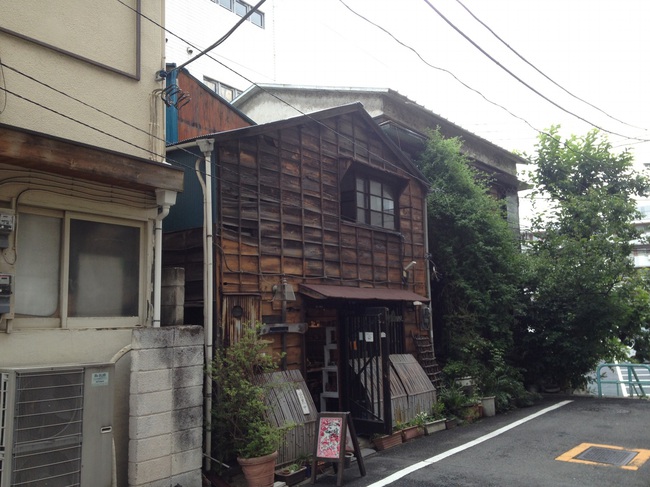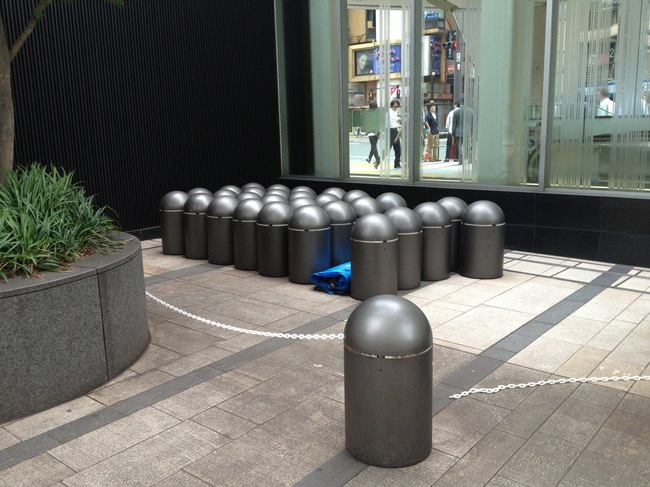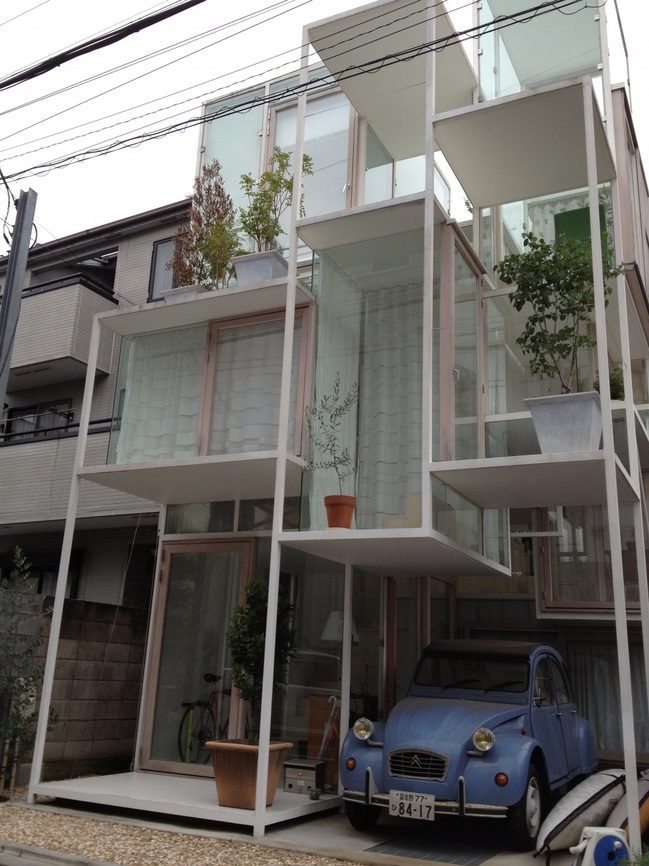
This was the first untouched old house in the middle of Tokyo I came across on this trip, so it got photographed. I love stumbling across these things; they’re the barn finds of architecture.
This one is especially good because you can go in it. It’s a little vintage porcelain shop. It’s really awesome, mostly untouched inside, too. I’d move in tomorrow. Even though it’s in a kind of disgusting corner of Roppongi, sandwiched between the elevated freeway and Tokyo Midtown.

Speaking of Tokyo Midtown, I love that these little portable stanchions don’t realize the chain’s down and they’re free to wander. [What, you think Japan doesn’t have robot stanchions for responsive crowd control in development somewhere?]

And speaking of slightly out of town, and tiny, kawaii places I’d move into tomorrow, we went to check out Sou Fujimoto’s NA House. The house’s location is unpublished, but it took all of five minutes to figure it out online. So don’t ask me to tell you.
What’s the point, one might ask, of going to visit a building that has been so widely published, and why take a picture when it’s been so skillfully documented by Iwan Baan?

Because you get to see how someone actually lives in that thing [answer: with lots of curtains], and you get to see it in context. Which, especially in Japan, means surrounded by 1) random architectural noise, and 2) electric power lines, transformers, and poles. I’d go so far as to say that this dense infrastructural web is one of urban Japan’s defining spatial conditions. I wonder if rather than cursing or ignoring it, an architect has ever addressed it in some way? What if you considered it a feature, not a bug?
IRL, NA House’s white steel grid and varied floor planes feel like a barely solidified extension of the criss-crossing mesh thicket in which it’s embedded.
Skip to content
the making of, by greg allen
